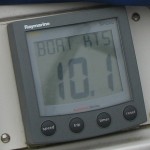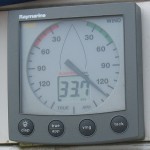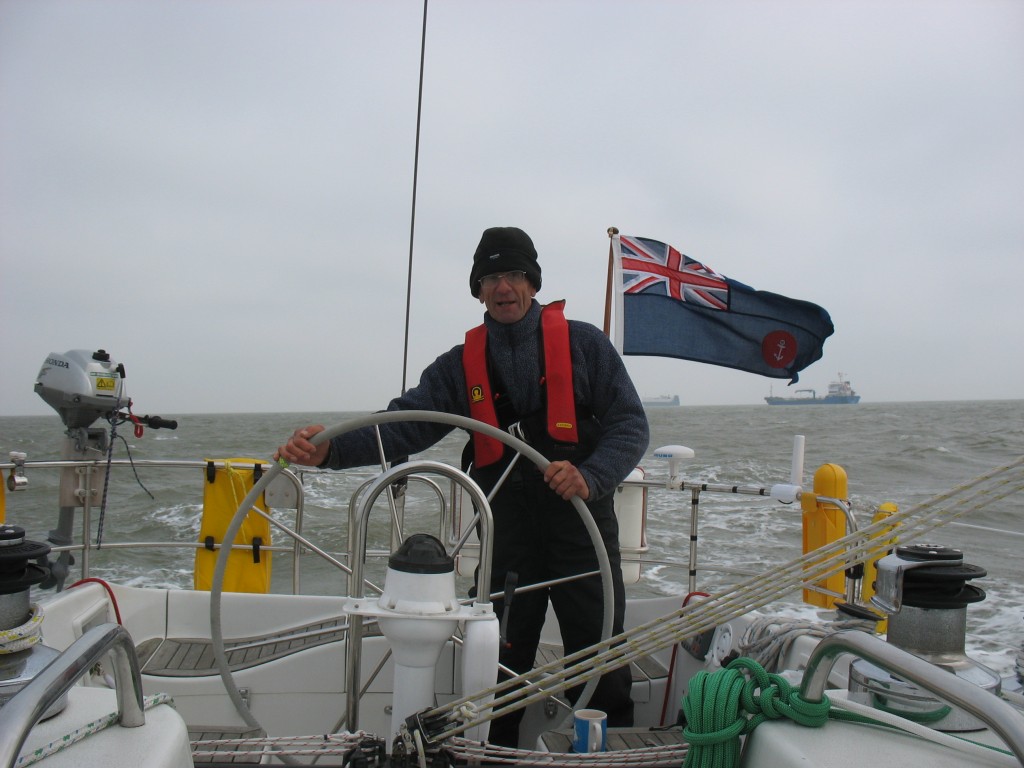Summary: Queenborough to Dover. Total 51.8 miles in 6 hours and 40 minutes. Mainly downwind with winds varying between 15 and 34 knots.

We left Queenborough just after 4.30am to try and catch the ebb down to North Foreland. Hoisted the main with on reef by Garrison Point and then two thirds of the jib. Cut across the Cant sands and then past the Spile buoy and the Spaniard cardinal. Had to keep a little further north than usual to avoid a shallow patch that they have created by raising the sea bottom to support the main cables going out to the Kentish Farm wind farm. The shallow bit is marked by four special yellow buoys. The wind was mostly N/NW and around 3-4 for this leg. We then headed down to the newly marked Copperas Channel instead of Hook Spit. Positively unimpressed to find that the new ‘updated’ C-Map cartridges still had the Hook Spit Channel marked when the Notices to Mariners have been informing us about this change since last year.

Once round the Longnose red off North Foreland we headed out a little and then gybed down to Ramsgate. The wind got up a little and we headed down to Ramsgate at nearly 10kts over the ground most of the way. As we went through the Brake channel it start gusting even further and as we approached Dover we had gusts of up to 35kts. The boat went beautifully, though it was a little quieter when we rolled a little more jib in as we approached Dover. Just outside the Eastern entrance we took the jib in and turned the engine on and were given permission to enter through the Eastern entrance – much easier than having to sail past. Have ended up in the Glanville Dock at Dover Marina.
Spent the afternoon visiting Dover Castle, prompted by the fact that we are looking up at it from the berth. However, we forgot that looking up meant we had to walk up and spent most of the afternoon going up steps right to the top of the Great Tower. The castle is essentially medieval, but there is also a Saxon church and Roman lighthouse. It started to take proper shape during the reign of Henry II. It has elements from each war as it has been used right through to recent times. Had an interesting tour around the tunnels that were used for planning Operation Dynamo – the evacuation of troops from Dunkirk. The officers and staff essentially lived completely in these tunnels. For some of them, the only daylight they got for long periods, was when they went to the loo built on the edge of the cliff – christened the loo with a view!

